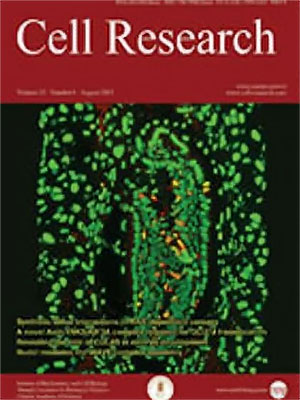
Volume 14, No 6, Dec 2004
ISSN: 1001-0602
EISSN: 1748-7838 2018
impact factor 17.848*
(Clarivate Analytics, 2019)
Volume 14 Issue 6, December 2004: 473-479
ORIGINAL ARTICLES
Regulation of alternative splicing of Bcl-x by IL-6, GM-CSF and TPA
Chang You LI1, Jia You CHU1,*, Jian Kun YU1, Xiao Qin HUANG1, Xiao Juan LIU1, Li SHI1, Yan Chun CHE1, Jiu Yong XIE2,*
1Institute of Medical Biology, Chinese Academy of Medical Sciences and Peking Union Medical College, Kunming 650118, China.
2Department of Physiology, Faculty of Medicine, University of Manitoba, 420 BMSB, 730 William Ave., Winnipeg, MB R3E 3J7, Canada.
Correspondence: Jia You CHU Jiu Yong XIE(chujy@public.km.yn.cn xiej@cc.umanitoba.ca)
The splicing of many alternative exons in the precursor messenger RNA (pre-mRNA) is regulated by extracellular factors but the underlying molecular bases remain unclear. Here we report the differential regulation of Bcl-x pre-mRNA splicing by extracellular factors and their distinct requirements for pre-mRNA elements. In K562 leukemia cells, treatment with interleukin-6 (IL-6) or granulocyte-macrophage colony stimulating factor (GM-CSF) reduced the proportion of the Bcl-xL variant mRNA while treatment with 12-O-tetradecanoylphorbol 13-acetate (TPA) had no effect. In U251 glioma cells, however, TPA efficiently increased the Bcl-xL level. These regulations were also seen for a transfected splicing reporter mini-gene. Further analyses of deletion mutants indicate that nucleotides 1-176 of the downstream intron are required for the IL-6 effect, whereas additional nucleotides 177-284 are essential for the GM-CSF effect. As for the TPA effect, only nucleotides 1-76 are required in the downstream intron. Thus, IL-6, GM-CSF and TPA differentially regulate Bcl-x splicing and require specific intronic pre-mRNA sequences for their respective effects.
FULL TEXT | PDF
Browse 2006


